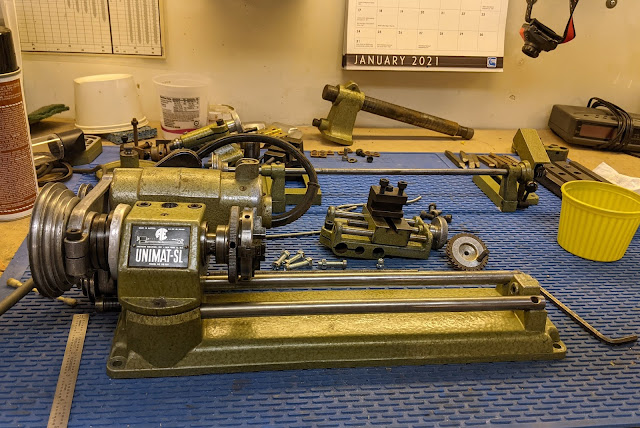As I have mentioned occasionally on this blog, my wife, Becky, is an ardent quilter. She enjoys her hobby as much as I do mine and is very good at what she does. Over the fifteen years we've been married, I have been the recipient of several quilts she has made. Of those, the best were two railroad-related ones. The latest one, pictured above, is almost finished, lacking only the actual quilting. Becky had discovered this panel and, since it fit my era, bought it for this project. The various blocks surrounding the center image were all made using other images of locomotives of my era. Surrounding the entire project is a set of railroad tracks.
The second quilt was made on the occasion of our first Christmas in 2001. The images were taken from a website I had about my last railroad, the Moraga Springs Northern. As you can see, the quilting follows the subject of the photo, outlining, locomotives, structures, etc.
What do these things have to do with the Stockton & Copperopolis or model railroading? Perhaps nothing but it does have a lot to do with keeping my interest in our hobby alive knowing that I am supported in my endeavors.




